- Liz Díaz-Vázquez
- Associate Professor
- PR NSF-CREST Center for Innovation, Research and Education on Environmental Nanotechnology
- http://www.cire2n.upr.edu
- Ctr for Innov Research and Ed in Environ Nanotech
- Carlos Cabrera
- Profesor
- PR NSF-CREST Center for Innovation, Research and Education on Environmental Nanotechnology
- http://www.cire2n.upr.edu
- University of Puerto Rico Rio Piedras, Ctr for Innov Research and Ed in Environ Nanotech
- Julio Cabrera
- Film Producer
- PR NSF-CREST Center for Innovation, Research and Education on Environmental Nanotechnology
- http://www.cire2n.upr.edu
- Ctr for Innov Research and Ed in Environ Nanotech, University of Puerto Rico Rio Piedras
- Ileana Feliciano
- Assistant Profesor
- PR NSF-CREST Center for Innovation, Research and Education on Environmental Nanotechnology
- http://www.cire2n.upr.edu
- University of Puerto Rico Rio Piedras, Ctr for Innov Research and Ed in Environ Nanotech
- Bonny Ortiz
- Lecturer
- PR NSF-CREST Center for Innovation, Research and Education on Environmental Nanotechnology
- http://www.cire2n.upr.edu
- Ctr for Innov Research and Ed in Environ Nanotech, University of Puerto Rico Rio Piedras
Public
Choice
Choice
Public Discussion
Continue the discussion of this presentation on the Multiplex. Go to Multiplex





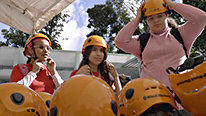
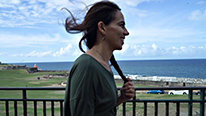
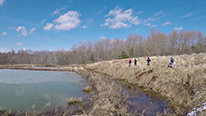
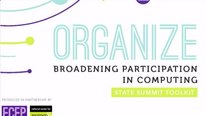
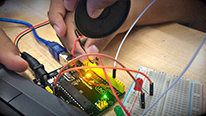
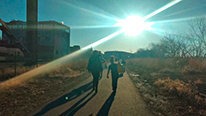
Julio Cabrera
Film Producer
See what Science Research Students from University of Puerto Rico CIRE2N Center are doing with kids in the community working together to help improve water quality at Yaguazo Cataño Puerto Rico using Environmental Nanotechnology..
See video here
Bonny Ortiz-Andrade
Liz Díaz-Vázquez
Liz Díaz-Vázquez
Associate Professor
Thank you for taking the time to watch our video! Our research team would love to hear your feedback!
We are interested to contribute to the training of a new generation of scientist that are aware of the importance of taking part in solve problems in their communities and include citizens in the search for solutions. With that in mind, our researchers and student are developing nanotechnology for environmental remediation, and at the same time, our participants are being training in effective science communication in order to improve the interaction with communities and the general public. We are interested in hearing about similar projects and suggestions to improve citizen science.
Julio Cabrera
Bonny Ortiz-Andrade
Edna Cabrera
Nice job! This is awareness needed to help save the planet!
Julio Cabrera
Bonny Ortiz-Andrade
Bonny Ortiz
Lecturer
This is a great video that shows the importance of the scientist in the community. A scientist who is part of the community, who are not isolated, who is out of the laboratory to helps solve the problems of the Puerto Rican society, in this case, an environmental problem: The remediation of water and soil using nanoscience and nanotechnology. In this process of solution creation, CIRE2N scientists take advantage of the connections with the community to teach about nanotechnology concepts.
Although remediation of water is the example shown in the video, also our CIRE2N scientists, work in the creation of nanomaterials for energy conversion and in the creation of sensors for environmental monitoring.
Most of the Puerto Rican population speaks Spanish, so we chose this language. Please, enlarge the screen so you can visualize the subtitles and enjoy the story told in it.
Jeanne Reis
Arnulfo Rojas
Noah Feinstein
Julio Cabrera
Bonny Ortiz-Andrade
Rabiah Mayas
Associate Director
Thank you for sharing your project and advancing a model of citizen science that positions the citizen as an invested, knowledgeable co-investigator in the research. I am curious about how the researchers are being trained in science communication - could you share a bit about that experience and what challenges you have navigated in connecting those communities?
Julio Cabrera
Bonny Ortiz-Andrade
Liz Díaz-Vázquez
Associate Professor
Thank you for taking the time to watch our video!
We have recruited a team of experts in education, communication, and scientist, teachers, students and members of the community. Together we are designing workshops and activities with the purpose of train our students and researchers on how to transform their research into interactive demonstration and education activities. One of the major challenges: Achieve that researcher communicate their science in a simpler manner without "Dumbing Down". The training includes the making of an elevator pitch video, writing of scientific news, development of demonstrations for Nanodays, a public event that we offered annually to the communities.
Bonny Ortiz-Andrade
Julio Cabrera
Film Producer
Thank you so much Rabiah for your comment!!!
I’m pretty sure Dr Liz Santiago will address your question in more detail so I just wanted to mention the young research students and community, specially kids, are involved in the outreach and education activities offered in our center such as Nanodays, summer camps, after school activities, and guided tours to our research facilities.
Its very clear this approach is creating the involvement and awareness of the responsibility of the community to be part of the solution and to contribute in this important research specially for water and soil remediation using Nanotechnology
Liz Díaz-Vázquez
Noah Feinstein
Associate Professor
This is very interesting work - I've never seen a project that integrates nanotechnology and environmental science in this way. Could you tell me more about the particular challenges of communicating about nanotechnology in your work, and thee strategies you've used to overcome those challenges?
I'd also love to hear more about how the young scientists involved in this project understand the value of the community-engaged work that they are doing. Do they see it as integral to their careers, or just something extra?
Bonny Ortiz-Andrade
Julio Cabrera
Arnulfo Rojas
Hello Noah.
I am the proud father of these two children and I am thrilled to saw them in this video. They have been part of the project since the initial activities of the outreach component. This program has also helped them in their first research steps. For example, this year my daughter presented her school science fair project on the Determination of Microplastics in the Shores of Puerto Rico. I am grateful to the program for helping this new generation of kids to have access to STEAM activities that will help them in their future careers.
Jeanne Reis
Noah Feinstein
Julio Cabrera
Bonny Ortiz-Andrade
Bonny Ortiz
Lecturer
Hello Noah. This is the science fair project Arnulfo is talking about:
Remember to activate the subtitles option. Cheers!
https://www.youtube.com/watch?v=1UMCeZIxtuw
Noah Feinstein
Arnulfo Rojas
Bonny Ortiz-Andrade
Alan Berkowitz
Great video and great project! I, too, am intrigued by the idea of integrating nanotechnology in addressing issues of contamination in the environment and would like to hear more about how you make this connection in the program. Also ... what age students are you working with and is it through schools with a curriculum connection, or an out-of-school program?
Bonny Ortiz-Andrade
Julio Cabrera
Carlos Cabrera
Profesor
Our NSF-CREST Center for Innovation, Research and Education in Environmental Nanotechnology has been a learning experience for all of us from the University of Puerto Rico, Rio Piedras Campus. Before this center, some of us were involved in a NASA Center for Advanced Nanoscale Materials. This NASA Funded Center was in the area of Nanotechnology applied to aerospace technology and life support systems. During the last 5 years, I started to get involved in environmental nanotechnology with my former Ph.D. Student and High School Teach, Dr. Keyla T. Soto Hidalgo. Keyla is a High School Teacher at the University of Puerto Rico High School. Through Keyla, we got to meet Pedro Carrion Huertas, a highly respected community leader for more than 30 years from Cataño, Puerto Rico, and the Corredor del Yaguazo, Inc. Pedro has lived all his life beside a wetland known as Cienagas las Cucharillas. As you may imagine, flooding and contamination is a daily issue that they have been fighting since then. Our interaction with Pedro and Keyla motivated us to look for the application of nanotechnology in contaminated wetlands. The education and innovation of new nanotechnology for humid and wetland places is our goal.
How was the NSF-CREST-CIRE2N formed? Two years ago, we created a research and educational group to work on this winning NSF-CREST proposal. Since August 2017, one month before Hurricane Maria, we started our research and educational mission with Pedro and his community. Our Center works with High School and Middle School Students and Teachers year around. During the summers we have the Nano-Envi Summer Camp for High School Teacher-Student Teams. They work with our researchers and develop projects that may be taken and continued at their schools.
Julio Cabrera
Bonny Ortiz-Andrade
Arthur D. Tinoco
This is truly terrific. Congratulations to all!
Julio Cabrera
Bonny Ortiz-Andrade
Carlos Cabrera
Profesor
Thank you Arthur!
Carlos
Bonny Ortiz-Andrade
Julio Cabrera
Liuba Cabrera
Desde la Universidad de San Carlos de Guatemala un saludo y felicitación por el excelente trabajo a todo el equipo.
Bonny Ortiz-Andrade
Julio Cabrera
Carlos Cabrera
Profesor
Gracias Liuba!
Un abrazo,
Carlos
Bonny Ortiz-Andrade
Julio Cabrera
Tony Prieto
Excellent job and Production. Congratulations.
Bonny Ortiz-Andrade
Julio Cabrera
Carlos Cabrera
Profesor
Thank you Professor Prieto!
Carlos
Bonny Ortiz-Andrade
Julio Cabrera
Julio Cabrera
Film Producer
Thank you all for taking time to visit watch, discuss and vote for this 3 minute video presentation STEM FOR ALL SHOWCASE VIDEO
Share what Science Research Students from University of Puerto Rico CIRE2N Center are doing with kids in the community working together to help improve water quality at Yaguazo Cataño Puerto Rico using environmental Nanotechnology.
Julio Cabrera
Bonny Ortiz-Andrade
Gretchen Mattina
Me encantó! Mucho éxito!
Bonny Ortiz-Andrade
Julio Cabrera
Carlos Cabrera
Profesor
Gracias Gretchen!
Carlos
Julio Cabrera
Bonny Ortiz-Andrade
M. Toledo
Tremenda gestión. Great video as well. Thanks for sharing!
Julio Cabrera
Bonny Ortiz-Andrade
Carlos Cabrera
Profesor
Muchas gracias por su apoyo!
Julio Cabrera
Bonny Ortiz-Andrade
Rebecca Roberts
Fantastic project and video. I'm curious how you facilitate the communication between the scientists and the community?
Julio Cabrera
Bonny Ortiz-Andrade
Carlos Cabrera
Profesor
Thank you Rebecca! Our researchers participate in outreach activities and well as during the summer they mentor the team of high school teacher-student. It is part of our proposal and they understand that is their duty to be part of these activities.
Julio Cabrera
Bonny Ortiz-Andrade
Anne Kern
Associate Professor
Wow, amazing work with the community. So I wonder if the community members brought the water quality to you, the researchers, or if the researchers went to the community to tell them there was a problem? (i.e. Community-based Participatory Action Research)
What type of interaction is there with the researchers and the youth in the community? Do the university students help to direct the lab research and innovation, are the university students also community members, how involved are the community members in the hands-on laboratory research?
Julio Cabrera
Bonny Ortiz-Andrade
Carlos Cabrera
Profesor
Hi Anne,
It all started with my former graduate student, Dr. Keyla T. Soto-Hidalgo, a High School Teacher. Through Keyla, we met Pedro Carrion, a community leader with 30 years of experience. Our researchers went to el Yaguazo to learn about their necessities and environmental problems. Based on our finding we wrote the NSF-CREST Proposal titled," NSF-CREST Center for Innovation, Research, and Education in Environmental Nanotechnology. Most of us used to be part of a NASA funded center. In our group we added two great environmental scientists that had been working at el Yaguazo, Drs. Elvira Cuevas and Jorge Ortiz.
Our team is involved in outreach activities with the community and will bring teams of teachers-students to work during the summers at our research laboratories. Soon, we will be applying nano zero valent iron nanoparticles (nZVI) to remove heavy metals from a very small section (10mx10mx10m) of el Yaguazo, as a proof of concept. This will allow us to work more closely with the community, as well.
Julio Cabrera
Li
Excelente trabajo ???
Bonny Ortiz-Andrade
Julio Cabrera
Carlos Cabrera
Profesor
Thank you Li!
Carlos
Kennie
Un trabajo muy importante para proteger y mantener la vida en la Tierra y fuera de ella.
Julio Cabrera
Julio Cabrera
Film Producer
Gracias Kennie!
J. Clark
Fascinating collaboration and community connection. I would appreciate hearing more about the work and interactions with the community students. Best of luck with your citizen science component.
Bonny Ortiz-Andrade
Julio Cabrera
Carlos Cabrera
Profesor
Dear Professor Clark,
Thank you for your comment. The way we are working with the community is by engaging them in our environmental nanotechnology projects through our NSF-CREST-CIRE2N summer research programs at UPR. Teacher-student teams work at our laboratories and use contaminated water and soil from el Yaguazo. Dr. Liz Diaz and Dr. Ileana Feliciano have been very active in promoting this interaction with the community.
Currently, we are planning on injecting nano zero valent iron nanoparticles (nZVI) in a section of the contaminated soil of el Yaguazo. nZVI are expensive, however, PUMA Energy will be contributing in this effort. This on-site experiment-test-bed will enhance our presence in el Yaguazo. Hopefully, the community will participate in this proof-of-concept project.
Julio Cabrera
Antonio Collazo
¡Excelente trabajo! Muy inspirador. Adelante.
Carlos Cabrera
Profesor
Gracias Antonio!
Saludos,
Carlos
Julio Cabrera
Film Producer
While making this video and the interviews one thing I noticed is the amazing mutual respect for each part of this equation... (Community Volunteers+ Science Researchers)
I interviewed Pedro Carrion an experienced community leader with over 30 years experience making amazing improvements moving the community to take care of their own problems and setting the stage for the actual Yaguazo Corrredor field for research and Dr Carlos Cabrera with over 30 years experience making amazing research accomplishments with their team at the University of Puerto Rico using Nanotechnology
It is a win win project!! Can’t wait to see and document the results of This ongoing Yaguazo field of study using Nanotechnology!!!
Eric Sheppard
Gran trabajo! This is a great video, short and to the point. Looks like this project will have a great benefit in Puerto Rico and beyond.
Bonny Ortiz-Andrade
Julio Cabrera
Eric Sheppard
Gran trabajo! This is a great video, short and to the point. Looks like this project will have a great benefit in Puerto Rico and beyond.
Bonny Ortiz-Andrade
Julio Cabrera
Julio Cabrera
Film Producer
Muchas gracias Eric!!!
Lcda. Navarro
Excellent iniciative to bring science to communities with a simple language relevant to their reality. It should be the goal to get young people interested in science and investigative process, particularly the integration of nanotechnology and environment to solve immediate problems of the communities.
Bonny Ortiz-Andrade
Julio Cabrera
Elix Hernandez
Cire2n provided me as a graduate student the unique opportunity to collaborate in an interdisciplinary space where you can learn and apply the knowledge of other scientific areas, having new ways of doing and disseminating science. Working with the community has helped me acquire skills of explaining science concepts in a way that everyone understands.
Jeanne Reis
Bonny Ortiz-Andrade
Julio Cabrera
Simara Laboy
Hi all! I’m one of the students that appears in the video and have read a few threads on the comments that I’d like to add to. Participating in CIRE2N has helped me acquire greater communication skills as we’ve had experts come in from different areas in science communication to give us workshops where we put our skills into practice and evaluate how we could’ve done it better. We’ve also learnt how to do stop motion videos and basic video editing to share our knowledge with the world and spread the word about what each of us does in our research labs. Integrating the use of technology has helped us reach a greater percentage of the community.
Jeanne Reis
Julio Cabrera
Bonny Ortiz-Andrade
Liz Díaz-Vázquez
Associate Professor
Thanks to all for taking the time to watch our video and comment! We are very excited about this opportunity to share our efforts in environmental nanotechnology and the integration of the community in our program.
To facilitate the communication of our researchers and students with the community as mention in previous comments, we put together a group of experts in different areas such science communication, mentoring, science journalism, communication technology research and education and members of the community. We meet twice a month to offer training but also to practice and discuss progress. Our fellows are working in the development of different materials to facilitate science communication and include the community. The activities go from interactive demonstrations, animations, videos to our most recent project a science magazine for the community and k-12 students.
But we are not just focusing on the development of materials, in collaboration with El Corredor del Yaguazo a community organization and CARAS a nonprofit organization we had coordinated different interventions with the community, such after-school activities were our fellows bring interactive activities to the children of the community, guided tours and field trips to the wetland and our laboratory facilities to explain the ecosystem and how the nanotechnology will be used to remediate water and soil contamination, summer camps, and public science fairs such as Nanodays. Another of our efforts is the Buddy system in which our fellows visit the community and schools to talk about their experiences as a scientist in order to promote STEAM careers. Our fellows also have interventions in the community's schools were Project-based learning related to our center research have been incorporated, though these projects the students and members of the community contributed to CIREN research. After Huracan Maria our center worked together with the community in different activities: (1) restoration, reforestation of the wetland and areas near the community (2) educative activities for the children of the community (3) orientation of water quality and disinfection mechanism.
In the next years we are planning to construct a Discovery Center and laboratory for the community, publish our science magazine for the general audiences and continue with the current initiatives. It is our goal to collaborated to generated public policies related to the use of nanotechnology for remediation purpose in the wetland. But most importantly we want to engage and empower the community in all the preservation and remediation activities. We are looking for collaborators to help us in this important mission! Join us!
Julio Cabrera
Bonny Ortiz-Andrade
Sebastián Schmidt
CiRe^2N is an amazing program that has helped me develop in scientific research while also learning that science can and must be incorporated with society, especially if the goals are to better that society in any way.
I have participated in:
I sincerely thank the founders for letting me take part in the innovations that are happening in science, the University of Puerto Rico, and in the lives of the islands people.
Bonny Ortiz-Andrade
Jeanne Reis
Rossana Velez
It is very important to include the community in the solution of problems. Nice job!!
Bonny Ortiz-Andrade
Liz Díaz-Vázquez
Associate Professor
Thank you Rosana!
Bonny Ortiz-Andrade
Jeanne Reis
What a wonderful video and project! It's striking to see how successfully a wide array of community members have been engaged to positively and directly impact local environmental issues using many of the science tools available. Incorporating nanotechnology is a great twist!
I wonder whether your team has found it challenging to discuss concepts such as the environment, conservation and nanotech in Spanish. Do you have vocabulary for all the information you need to discuss? Are there high quality textbooks and other materials in Spanish? Are scientists and students in Puerto Rico adopting and adapting academic terms from Spanish-speaking communities in other parts of the world, or are the vocabularies of each region and country quite distinct?
I'm wondering if your team has faced similar 'language-ing' challenges as our teams of Deaf STEM subject matter experts. The lack of broadly shared and linguistically-appropriate vocabulary in ASL is a significant barrier for deaf students attempting to easily and fluidly discuss and learn content in the STEM fields. In response, the ASL Clear team of Deaf scholars began to create quality STEM materials and new vocabulary in ASL over a decade ago. In 2017, we released this content in an online application and reviews so far have been very positive, to our delight.
Blanca Cabrera
Great work.Thanks for sharing it.I was born in Catano, makes me very proud all the efforts done to take care of the environment and the planet as well.Fantastic community work.
Namir Huertas
The main personal achievement do to CiRe2Ns outreach has been to successfully engage with K-12 students in high quality learning activities that help them to develop strong STEM skills. Promoting STEM programs and research have proven helpful in my personal goal to provide the general public accurate and recent data on environmental issues.
Ileana Feliciano
Thank you for the feedback and comments about our video. This video was created to let know the importance of the integration in the science in our case, the nanotechnology and the enviroment. This integration achieves the contribution of the scientific as part of the community in the search of solutions to the enviromental problems that affects the Puerto Rican society.
Further posting is closed as the showcase has ended.